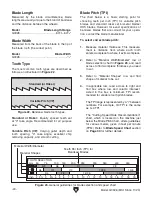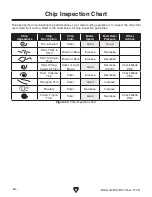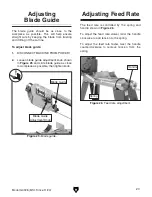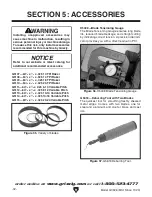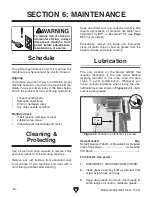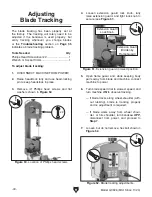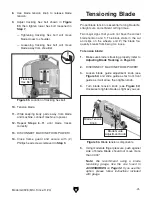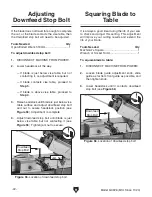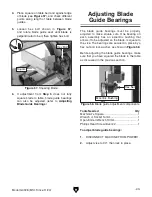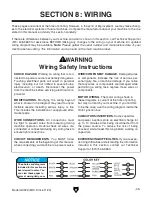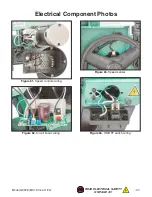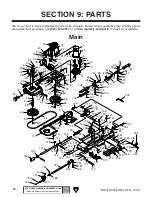
Model G0926 (Mfd. Since 11/20)
-35-
Review the troubleshooting procedures in this section if a problem develops with your machine. If you need
replacement parts or additional help with a procedure, call our Technical Support.
Note: Please gather the
serial number and manufacture date of your machine before calling.
SECTION 7: SERVICE
Troubleshooting
Motor & Electrical
Symptom
Possible Cause
Possible Solution
Machine does
not start, or
power supply
breaker
immediately
trips after
startup.
1. Switch disabling key removed.
2. Machine circuit breaker tripped.
3. Blown fuse.
4. Incorrect power supply voltage or circuit size.
5. Power supply circuit breaker tripped or fuse
blown.
6. Wiring broken, disconnected, or corroded.
7. Motor brushes worn out.
8. ON/OFF or circuit breaker switch at fault.
9. Circuit board at fault.
10. Potentiometer/variable speed dial at fault.
11. Motor or motor bearings at fault.
1. Install switch disabling key.
2. Reset circuit breaker.
3. Replace fuse/ensure no shorts.
4. Ensure correct power supply voltage and circuit size.
5. Ensure circuit is free of shorts. Reset circuit breaker or
replace fuse.
6. Fix broken wires or disconnected/corroded
connections.
7. Remove/replace motor brushes (
Page 37).
8. Replace switch/circuit breaker.
9. Inspect/replace if at fault.
10. Inspect/replace if at fault.
11. Replace motor.
Machine stalls,
bogs down
in cut, or is
underpowered.
1. Workpiece crooked; vise loose or
misadjusted.
2. Wrong workpiece material (metal) or wrong
blade type/TPI for material.
3. Gearbox at fault.
4. Blade slipping on wheels.
5. Machine undersized for task.
6. Blade wanders or gets pinched in cut.
7. Motor overheated, tripping machine circuit
breaker.
8. Extension cord too long.
9. Circuit board at fault.
10. Motor brushes worn out.
11. Motor or motor bearings at fault.
1. Straighten or replace workpiece/adjust vise (
Page 28).
2. Use correct type/TPI/size of blade and metal
(
Page 23).
3. Replace broken or slipping gears.
4. Adjust blade tracking (
Page 40) and tension
(
Page 41).
5. Use sharp blade; reduce feed rate/depth of cut.
6. Replace or replace guide bearings.
7. Clean motor/let cool, and reduce workload. Reset
breaker.
8. Move machine closer to power supply; use shorter
extension cord.
9. Inspect and replace if at fault.
10. Remove/replace motor brushes (
Page 37).
11. Replace motor.
Machine has
vibration or
noisy operation.
1. Motor or component loose.
2. Stand or stand feet not adjusted properly.
3. Workpiece loose.
4. Blade damaged, warped, or has excessively
large weld.
5. Motor bearings at fault.
6. Gearbox at fault.
1. Replace damaged or missing bolts/nuts or tighten if
loose.
2. Adjust stand or stand feet to stabilize machine.
3. Secure workpiece in vise (
Page 28).
4. Replace warped/damaged blade (
Page 38) or grind
weld flush with blade.
5. Test by rotating shaft; rotational grinding/loose shaft
requires bearing replacement.
6. Rebuild gearbox for bad gears/bearings.
Summary of Contents for G0926
Page 56: ......




